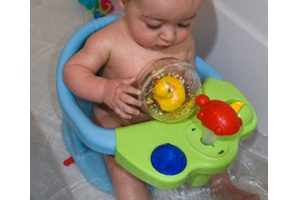
18 Children Under the Age of 15 Died In Toy-Related Accidents. The Associated Press (AP) reports that the Consumer Product Safety Commission (CPSC) has said that most of last year’s deaths involving children and toys were caused by blocked airways and drowning and that no less than 18 children under the age of 15 […]

18 Children Under the Age of 15 Died In Toy-Related Accidents. The Associated Press (AP) reports that the Consumer Product Safety Commission (CPSC) has said that most of last year’s deaths involving children and toys were caused by blocked airways and drowning and that no less than 18 children under the age of 15 died in toy-related accidents; 14 were boys.
Five children—representing the largest data group—died in tricycle-related incidents, with one dying in a fall, one from a motor vehicle accident, and three drowning after falling into pools while riding tricycles, the AP reported. Also in the AP report, one child died from “complications days after falling into a pool while riding a battery-powered vehicle” and another two children drowned while playing near water. One was playing with an inflatable toy and another with a toy boat. The AP also noted that CPSC data indicated that four children died from choking on rubber balls, two from choking on uninflated balloons, one after inhaling a rubber dart, and an infant from suffocation after falling off a bed and onto a stuffed toy. Two other children died after “they were hit by a car while riding non-motorized scooters,” the AP added. The AP also noted that the CPSC “estimates that 232,900 toy-related injuries were treated at hospitals in 2007.”
Last November we reported on the CPSC’s suggestions for toy safety to help ensure a happy and safe holiday season. While we reported that although numerous product recalls do make the news each year—over 400 annual children product recalls receive media coverage—consumers should stay informed and aware of recalls by signing up to receive email notification of such recalls at www.cpsc.gov.
The CPSC urges consumers to look for labels that give age and safety recommendations and choose toys to suit the child’s age, abilities, skills, and interest. Look for sturdy construction. No toys with sharp edges and points for children under eight, no small magnets for children under six—when swallowed, magnets can cause serious injuries and death—and no small parts for children under three. Immediately discard plastic wrappings and keep older children’s toys away from young children. Read instructions and warnings on battery chargers; some are unable prevent overcharging, resulting in thermal burn hazards. Riding toys, skateboards, and in-line skates go fast and falls could be deadly; safety gear should be sized to fit. Projectile toys are for older children and can cause serious eye injuries.
By November of last year, the CPSC recalled 61 toys involving over 25 million products; over six million were recalled due to lead, the highest number ever due to product defects. When recalls occur, firms take steps to remove products from market, but it is impossible to police toys sold at thrift stores, garage sales, and Internet auction sites. A large variety of recalled toys have been found selling individually and in bulk via retail and business-to-businesses sites. Recalls also extend to nontoy products and, sometimes, action is not swift. Take, for instance, the numerous crib recalls—well over one million cribs—in the past two years, the 2007 debacle in which an eight-month old baby boy died prompting a 36,000-item recall by Jetmax, and another scandal that year in which it took the CPSC three weeks to pick up a faulty Bassettbaby’s crib for review. Nearly 9000 of those cribs were subsequently recalled due to a construction flaw posing entrapment and strangulation hazards.
The personal injury attorneys at Parker Waichman LLP offer free, no-obligation case evaluations. For more information, fill out our online contact form or call 1-800-YOURLAWYER (1-800-968-7529).


